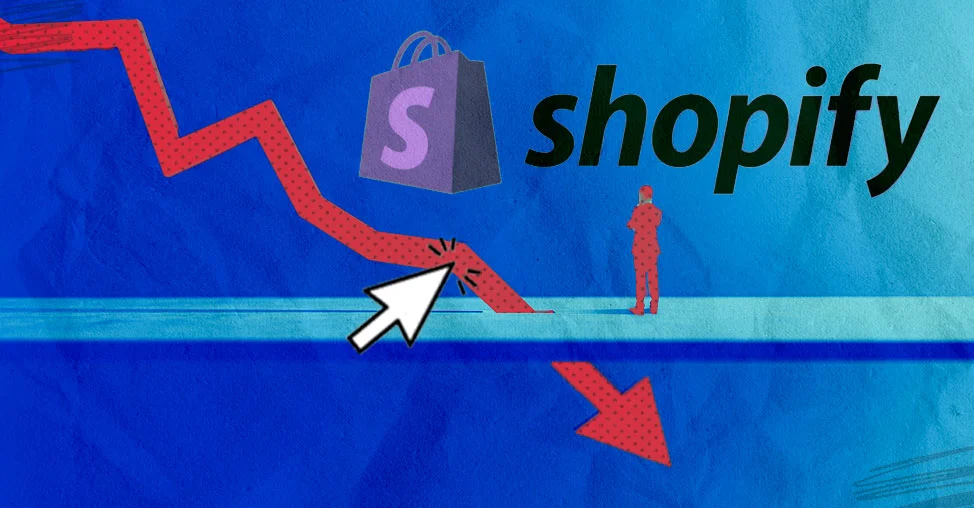Headless commerce is a type of eCommerce architecture wherein the frontend of the platform is decoupled from its backend. Disassociating the functionalities of these two layers allows freedom to make changes at one end without hampering the working of the other, thus empowering eCommerce businesses to deliver enhanced customer experiences that engage better.
Since the frontend becomes independent of the backend of the site, optimizations can be made to the online storefront instantaneously without the involvement of any development help.

While headless commerce makes running an eCommerce business far more efficient, agile, customizable, and fast, there are certain pitfalls you need to steer clear of to ensure you are doing it right. Else, you could end up doing more harm than good.
Let’s deep dive into some of the common mistakes that you could be making that might be hurting your business.
Headless commerce mistakes that are costing you
1. You may not be offloading complexity
Since headless commerce facilitates customization at its best, businesses tend to overdo it and create complex user journeys for their buyers to navigate. Complex user journeys wherein shoppers need to navigate multiple pages, pop-ups, and steps to finally convert make for extremely poor customer experiences.
Instead, once you move to headless commerce, try to simplify your customer journeys and not overcomplicate them so you can achieve the results you set out to and at the same time not have a hard time tracking and measuring your key metrics.
2. You're probably overlooking responsibilities & not using your resources efficiently
Headless eCommerce adds several layers and nuances to your online store and thus requires far more dedicated maintenance. However, when businesses make a sudden shift to this polylithic eCommerce architecture, they often tend to overlook key roles, responsibilities, and resources required to make a successful transition.
For example, headless commerce will require you to hire a dedicated web developer, web designer, and UI and UX specialist - each of whom can work together to constantly monitor and analyze your store, and make it work efficiently.
The bottom line is to check off all additional resource requirements before you rely on making headless commerce work for your business.

3. You may be using the wrong integrations and CMS
Javascript integrations are not optimized for headless eCommerce sites and end up slowing down your site and hampering its performance. Hence, make it a point to rely on API integrations and not Javascript ones for your headless commerce site.
A content management system is required to publish and manage content on a site without any developer involvement. However, as opposed to traditional CMS, there aren’t many readily available headless CMS that do not require developer intervention.
Therefore, carefully pick one that doesn’t require you to heavily rely on a developer so that your business continuity and goals aren’t deeply affected.

4. Your prototypes may not be nailed down
Headless commerce sounds all fun and games, but it can be quite a tough nut to crack. Jumping on the bandwagon is easy, but getting the basics right is often ignored.
Many businesses tend to ignore creating prototypes for different sections of their online stores with customizations detailed out and directly move to the execution phase. This leads to far more confusion, illogical customizations, and directionless efforts.
All in all, remember to work on your prototypes that detail out your user journeys and the results you are planning to achieve, before jumping right into it.
5. You may not be asking the right questions
Headless commerce is not for everyone and every online store out there.
Therefore, before you even get started with it, it’s essential to ask questions such as Is this crucial for my store?, How much will headless commerce maintenance cost me?, What is the degree of customizations that headless commerce will allow me to make?, Can I make them without it?, What are the results that only headless commerce can fetch me? and so on.
Only once your fellow stakeholders are clear about the answers to these questions is it advisable to make the transition, so you are sure that you are in it for the right reasons.
Hey, have you seen this? Product page UX: 15 data-backed secrets for high conversions
6. The big picture may not be properly visualized
Headless commerce costs more than a straightforward, monolithic architecture for your online store. Now, if headless commerce isn’t fulfilling your large business goals, what are you even in it for?
The point is that don’t just switch to eCommerce because your competitors are doing it, do so because you believe it can transform your business and you have the data to back it up.
7. You're probably not auditing your website regularly
With more customizations come added complexities. If you simply let those complexities get built up, you are just setting yourself up for a reduced conversion rate.
With headless commerce, you need to regularly audit your store and check whether each of your customizations is helping in improving your overall store conversions, both standalone and together with other customizations.
Constantly monitoring your website from a UI and UX standpoint will ensure that your customizations are actually working in your favor and leading to desirable results.
8. You may not be in it for the right reasons
Some of the most compelling reasons for opting for headless commerce include making instantaneous optimizations to your online store, quickly adding or modifying features or products so you can scale better and faster, offering enhanced shopping experiences, and experimenting more easily, frequently, and with far more agility.
Reading up in-depth about each of these reasons and the other capabilities of headless commerce is important before you make a decision or else you might be able to make the most of it and will just end up increasing your costs.
For example, if you already have a robust experimentation engine in place to conduct quick tests and make instant optimizations to your store, you might not exactly need to uproot that and go for headless commerce that essentially serves the same purpose.
You might like: Headless Commerce 101: Ultimate Guide
9. Your experience probably isn’t strong enough
Headless commerce offers a lot of flexibility to businesses in terms of building a robust online store from the ground up.
However, more often than not, decision-makers get caught up in the capabilities and features that they are receiving, and they forget the most core, the fundamental value they need out of this architecture - improved customer experience and engagement.
They end up using up all the added customizations and features available to tailor a nuanced, but frustrating user journey that doesn’t really solve for any customer pain point, instead only adds to them.
Hey, check this out: Improve your website’s user experience today: A 10-point checklist
10. You may not have a strong foundation
While developing headless commerce, you need to ensure that your tech stack, as well as resources, are well capable at the job. The tools, plugins, platforms you use, and the developers you hire, should all be nothing but best at creating a solid foundation for your online store.
The very basic fundamental building blocks of your store should be such that they can handle the various layers of optimizations and complexities that you plan on adding on top of them.
11. You may be doing too much
Switching to headless commerce can be exciting and transformational. Therefore, in a rush to achieve it all, you end up doing too much, too quickly. What this means is that you start leveraging all customizations that headless commerce has to offer for your store to their full potential, without taking into account its repercussions.
Doing it all at once will take you a whole lot of time to go live, thus deeply hurting your business goals. Instead, try to phase out your optimizations. Take them slow and tackle them in phases so you can iteratively build a solid headless commerce architecture for your online store.

12. You may be wrongly estimating the time and effort requirement
Sure, headless commerce offers so much more flexibility to your business. However, online business owners often wrongly estimate the time, effort, and cost involvement in the process.
More development time, larger teams, and a higher degree of maintenance are just a few of the many factors you need to take into account when planning a roadmap for setting up a headless commerce site. Not that any of it isn’t worth it; the point is that you must account for the additional requirements and detail them out in your development roadmap.
You'll love this: The 7-step process to optimize your ecommerce conversion funnel
Headless commerce is a great way to make enhancements to your digital storefront, without disturbing the backend. As long as you stay away from the above-mentioned pitfalls, you are on your path to making the most of this architecture and watching your conversion metrics grow. The bottom line remains that you need to first assess whether or not headless commerce is meant for your business and how it can work for you before jumping right into it, as it requires dedicated planning, resource allocation, and thorough execution.






.svg)

.webp)




.svg)


.svg)

.svg)
.svg)
